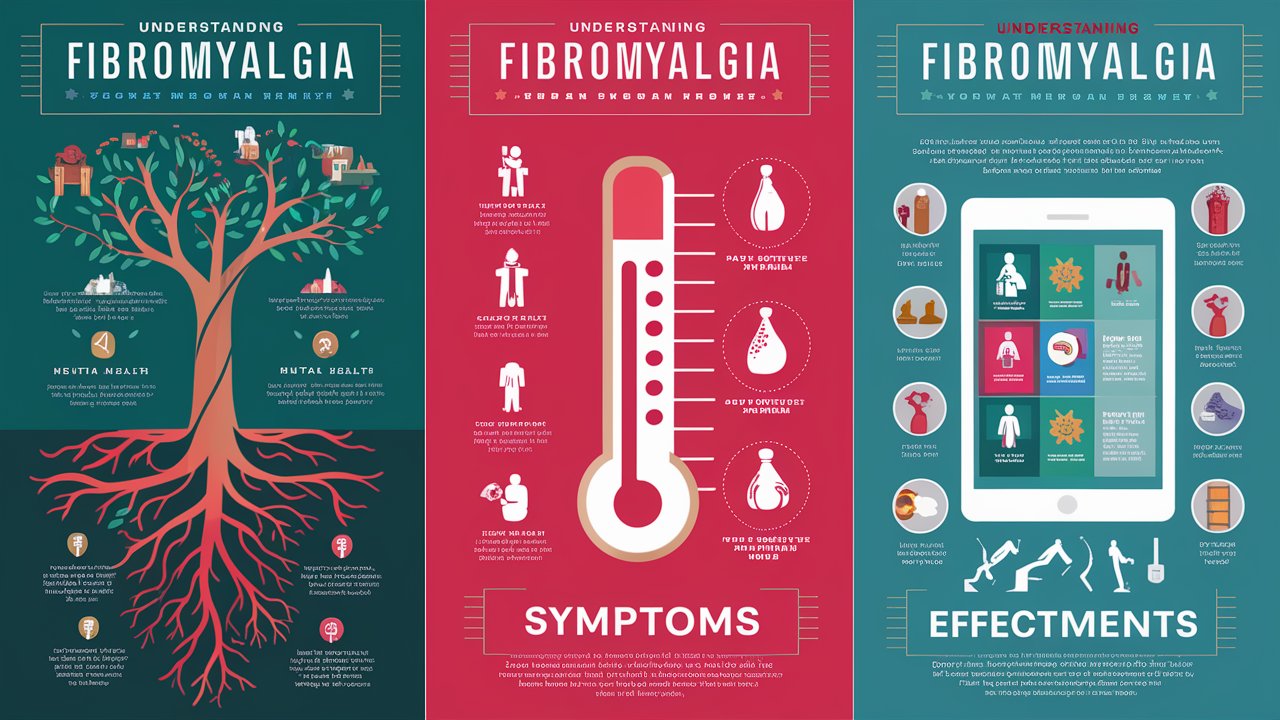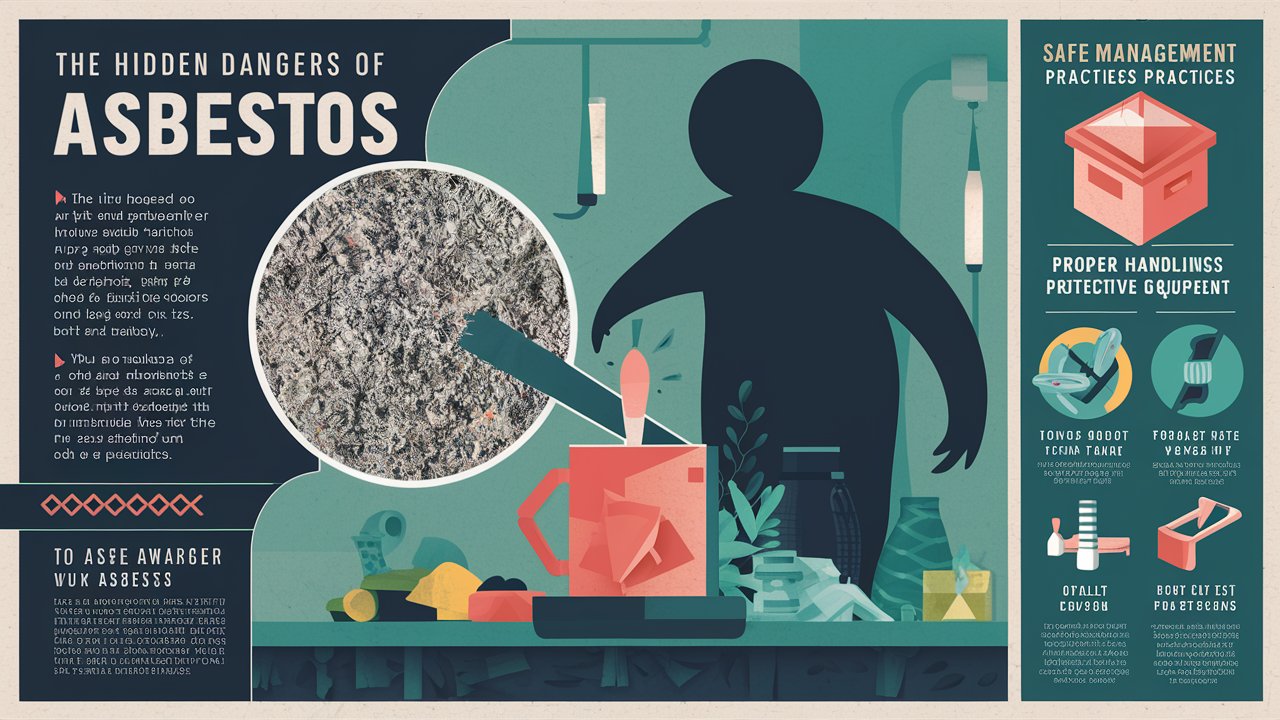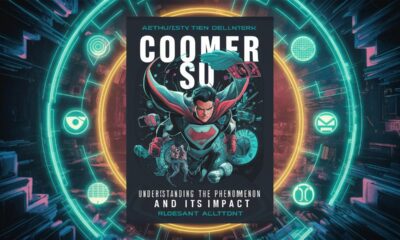Health
The True Meaning of Fresh: A Complete Guide to Freshness in Food, Lifestyle, and Mindset

The word fresh is one of the most versatile and powerful terms in our daily lives. It carries connotations of purity, quality, renewal, and vitality. Whether we are talking about food, air, ideas, or a fresh start, the concept of freshness represents something unspoiled, clean, and new. In this comprehensive guide, we will dive deeply into the meaning, explore how it applies across various aspects of life, and understand why it remains such a timeless and influential concept.
What Does Fresh Mean?
The word fresh originates from the idea of being new, unaltered, and in its most natural state. To call something is to say it is untouched, uncontaminated, and vibrant with original qualities. Freshness represents both physical and metaphorical states. Food can be, but so can your outlook on life.
Freshness can be classified into three main categories:
-
Physical Freshness – food, water, flowers, and natural elements.
-
Environmental Freshness – air, surroundings, and atmosphere.
-
Mental & Emotional Freshness – ideas, creativity, mindset, and lifestyle.
Fresh Food: The Essence of Taste and Health
When we think of the word, the first association is usually with food. Fresh food is not just about flavor; it is about nutrition, safety, and overall well-being.
-
Fresh fruits and vegetables are rich in vitamins, minerals, and antioxidants. Consuming them regularly improves immunity, digestion, and energy levels.
-
Fresh meat and seafood are healthier and tastier compared to frozen or preserved alternatives. Their texture and nutritional value are far superior when consumed in their natural state.
-
Freshly baked bread and fresh dairy products like milk, cheese, and yogurt symbolize quality and authenticity.
The importance of food is undeniable in maintaining a balanced diet, stronger health, and a longer life.
Fresh Air: The Breath of Life
Freshness is not limited to food. The air we breathe plays an equally vital role. Air is clean, oxygen-rich, and free from pollutants, making it essential for physical and mental health.
Spending time outdoors in natural surroundings, by the sea, or in the mountains provides a atmosphere that rejuvenates our lungs and mind. Studies show that people who are regularly exposed to air experience less stress, improved sleep, sharper focus, and stronger immunity.

Fresh Ideas: The Power of Innovation
Beyond physical and environmental freshness lies the realm of mental freshness. A fresh idea is one that challenges conventional thinking, introduces creativity, and opens doors to innovation.
-
Businesses thrive when they bring concepts to the market.
-
Writers, artists, and creators depend on inspiration to produce meaningful work.
-
Leaders with perspectives often bring transformational changes to society.
Fresh ideas act as seeds of progress, driving both personal growth and societal advancement.
Fresh Start: Renewal and Transformation
The phrase “a fresh start” is one of the most empowering concepts in human life. It represents letting go of the old and embracing the new.
-
After failures, a fresh start allows us to rebuild stronger.
-
In relationships, a fresh beginning opens doors to better understanding and harmony.
-
In personal life, starting fresh often means detoxing your environment, resetting your mindset, and adopting healthier habits.
Fresh starts symbolize hope, resilience, and limitless opportunities.
Fresh Lifestyle: Living with Vitality
Adopting a fresh lifestyle means living in a way that embraces health, clarity, and renewal. It is about making choices that keep your body, environment, and mind vibrant.
-
Eating fresh, whole foods instead of processed meals.
-
Spending time in fresh air and natural surroundings instead of polluted environments.
-
Maintaining fresh routines with exercise, meditation, and sleep.
-
Refreshing your personal space by decluttering and keeping it clean.
Such habits create a sustainable lifestyle filled with energy, balance, and satisfaction.
Fresh vs. Stale: Why Freshness Always Wins
The opposite of fresh is stale. Stale food, air, or ideas are lifeless, unhealthy, and unappealing. Choosing freshness means choosing life, vitality, and progress.
-
Fresh food nourishes, while stale food harms.
-
Fresh air energizes, while polluted air weakens.
-
Fresh ideas inspire, while stale thinking limits growth.
The preference for freshness is deeply rooted in human instincts because it is closely tied to survival, growth, and evolution.
How to Stay Fresh in Daily Life
Bringing freshness into your everyday life requires conscious effort. Here are some effective strategies:
-
Eat Daily – Choose seasonal produce, locally sourced food, and unprocessed meals.
-
Breathe Air – Spend time outdoors, ventilate your home, and add indoor plants.
-
Think Fresh Thoughts – Read, learn, and engage in creative activities.
-
Maintain Fresh Surroundings – Clean and organize your living and working spaces.
-
Refresh Your Lifestyle – Take breaks, exercise, meditate, and allow your body and mind to recharge.
Freshness should not be an occasional luxury—it should be a daily practice.
Conclusion
Freshness is more than just a word; it is a way of living. From fresh food that sustains health, air that fuels our lungs, ideas that inspire progress, to starts that renew our spirit, freshness is the foundation of a vibrant life. By embracing freshness in all its forms, we invite purity, strength, and growth into our lives.
FAQ on Freshness
Q1: Why is fresh food better than processed food?
Fresh food contains natural nutrients, enzymes, and minerals that processed food loses during manufacturing. It is healthier, tastier, and more beneficial for long-term well-being.
Q2: How can I bring freshness into my daily routine?
Incorporate fruits and vegetables into meals, take outdoor walks for air, adopt new ideas through learning, and refresh your home environment regularly.
Q3: What does it mean to have a fresh mindset?
A mindset means being open to new perspectives, adaptable to change, and willing to let go of negativity while embracing growth and innovation.
Q4: Is a fresh start always possible?
Yes, no matter the circumstances, start is always possible by resetting your habits, outlook, and environment to create a new path forward.
Q5: Why is freshness associated with positivity?
Freshness signifies purity, renewal, and vitality. It represents hope, health, and progress, which are inherently positive qualities.
Health
Understanding Inomyalgia: Causes, Symptoms, and Effective Treatments

Inomyalgia is a complex and often misunderstood health condition that affects millions of individuals worldwide. Characterized by widespread muscle pain, chronic fatigue, and tenderness in specific areas of the body, inomyalgia significantly impacts quality of life. While it shares similarities with fibromyalgia, inomyalgia is considered a unique condition with its own distinct characteristics. In this article, we will explore everything you need to know about inomyalgia, including its causes, symptoms, diagnosis, and treatment options, as well as lifestyle strategies that can help patients manage this chronic condition effectively.
What Is Inomyalgia?
Inomyalgia refers to a chronic pain disorder that primarily targets muscles and connective tissues. Unlike temporary muscle aches that result from injury or overexertion, inomyalgia persists over time and is often accompanied by additional symptoms such as fatigue, stiffness, and cognitive difficulties. The term “inomyalgia” is derived from the Greek words inos (muscle fiber), myo (muscle), and algia (pain), which directly translates to “pain in the muscle fibers.”
This condition can affect people of any age, though it is more common in middle-aged adults and is frequently seen in women. The chronic pain and discomfort caused by inomyalgia often lead to challenges in work, relationships, and daily living activities, making it crucial to understand and address the condition holistically.
Causes of Inomyalgia
The exact cause of inomyalgia remains unclear, but researchers believe it arises from a combination of genetic, neurological, and environmental factors. Some of the leading theories include:
-
Neurological Dysfunction: Abnormalities in how the brain and spinal cord process pain signals can lead to heightened pain sensitivity, a hallmark of inomyalgia.
-
Genetic Predisposition: Family history appears to play a role, as individuals with relatives suffering from chronic pain disorders are more likely to develop inomyalgia themselves.
-
Hormonal Imbalances: Changes in serotonin, dopamine, and cortisol levels may contribute to chronic muscle pain and fatigue.
-
Stress and Trauma: Both physical trauma (such as injuries) and emotional stress are known triggers for inomyalgia symptoms.
-
Sleep Disturbances: Poor sleep quality or sleep disorders often exacerbate symptoms and may even contribute to the onset of the condition.
Common Symptoms of Inomyalgia
The symptoms of inomyalgia can vary in severity from person to person, but they typically include:
-
Chronic Muscle Pain: Persistent aching or burning sensations in muscles throughout the body.
-
Tender Points: Specific areas of the body, such as the neck, shoulders, back, and hips, become extremely sensitive to touch or pressure.
-
Fatigue: Patients often feel exhausted even after a full night’s sleep, making it difficult to engage in daily activities.
-
Morning Stiffness: Muscles and joints may feel tight and stiff, particularly upon waking.
-
Cognitive Impairments (“Fibro Fog”): Difficulty concentrating, memory lapses, and mental fatigue are common complaints.
-
Headaches and Migraines: Many patients report frequent tension headaches or migraines linked to muscle tension.
-
Sleep Disorders: Insomnia, restless leg syndrome, and sleep apnea are often associated with inomyalgia.

Diagnosis of Inomyalgia
Diagnosing inomyalgia can be challenging because no single test exists for the condition. Instead, healthcare providers rely on a comprehensive evaluation, including:
-
Medical History Review: An in-depth discussion of symptoms, duration, and potential triggers.
-
Physical Examination: Checking for tender points and assessing muscle pain patterns.
-
Exclusion of Other Conditions: Blood tests, imaging, and other diagnostic tools help rule out autoimmune diseases, arthritis, or thyroid issues that mimic inomyalgia.
A diagnosis is typically made when widespread muscle pain has persisted for more than three months, alongside other hallmark symptoms such as fatigue and sleep disturbances.
Effective Treatment Options for Inomyalgia
While there is no permanent cure, a variety of treatments for inomyalgia can help manage symptoms and improve quality of life. These include:
1. Medications
-
Pain Relievers: Over-the-counter painkillers like ibuprofen and acetaminophen may ease mild discomfort.
-
Antidepressants: Certain antidepressants can regulate serotonin levels, reducing pain and fatigue.
-
Anti-Seizure Drugs: Medications like pregabalin and gabapentin help calm overactive nerves that amplify pain signals.
2. Physical Therapy
Customized exercise routines, stretching, and strengthening programs designed by physical therapists improve muscle flexibility and reduce stiffness.
3. Cognitive Behavioral Therapy (CBT)
CBT helps patients manage the emotional and psychological challenges of chronic pain, reducing stress and improving coping strategies.
4. Lifestyle Modifications
-
Balanced Diet: Anti-inflammatory foods rich in omega-3 fatty acids, whole grains, and fresh fruits support muscle health.
-
Regular Exercise: Low-impact activities like swimming, walking, and yoga reduce pain and boost energy.
-
Sleep Hygiene: Creating a healthy sleep routine improves rest and reduces fatigue.
5. Alternative Therapies
Many patients benefit from acupuncture, massage therapy, and mindfulness practices that promote relaxation and reduce muscle tension.
Living with Inomyalgia: Coping Strategies
Managing inomyalgia requires a comprehensive approach that extends beyond medical treatments. Patients often find relief through:
-
Support Groups: Connecting with others facing similar challenges provides emotional strength and practical advice.
-
Stress Management: Meditation, deep breathing, and relaxation techniques lower stress, which often worsens symptoms.
-
Pacing Activities: Balancing rest with activity prevents overexertion and reduces flare-ups.
-
Education and Awareness: Learning about the condition empowers patients to make informed decisions about their care.
Prevention and Risk Management
While it may not be possible to prevent inomyalgia entirely, adopting healthy habits can reduce the risk of severe flare-ups:
-
Prioritizing quality sleep.
-
Maintaining a healthy weight.
-
Engaging in regular, gentle exercise.
-
Avoiding excessive stress and learning stress management techniques.
-
Seeking early medical attention when chronic muscle pain first appears.
Conclusion
Inomyalgia is a chronic condition that requires patience, resilience, and a comprehensive treatment plan. Though it can be challenging to live with persistent muscle pain, fatigue, and cognitive difficulties, effective management strategies—from medications to lifestyle changes—can significantly improve quality of life. By raising awareness, supporting ongoing research, and promoting holistic treatment approaches, we can help individuals with inomyalgia regain control of their health and live more fulfilling lives.
FAQs about Inomyalgia
1. Is inomyalgia the same as fibromyalgia?
No, while they share similarities, inomyalgia is considered distinct and may involve different underlying causes and treatment responses.
2. Can inomyalgia be cured?
Currently, there is no cure, but symptoms can be effectively managed with a combination of medical treatments and lifestyle strategies.
3. Who is most at risk of developing inomyalgia?
Women, middle-aged adults, and individuals with a family history of chronic pain conditions are at higher risk.
4. What foods should I avoid if I have inomyalgia?
Highly processed foods, excessive sugar, caffeine, and alcohol may worsen inflammation and fatigue.
5. Can exercise help or worsen inomyalgia?
Gentle, low-impact exercise usually helps reduce symptoms, but overexertion may trigger flare-ups.
Health
Asbestlint: Understanding the Hidden Dangers and Safe Management Practices

Asbestlint is a term that often raises concern, as it is closely associated with asbestos fibers and the harmful health risks they bring. Many property owners, construction workers, and homeowners are still unaware of the hazards connected to exposure. In this comprehensive guide, we will dive deep into what asbestlint is, where it can be found, how it impacts human health, and the proper methods of handling and removal to ensure safety.
What is Asbestlint?
Asbestlint refers to the minute, often invisible asbestos fibers that can become airborne when asbestos-containing materials (ACMs) are disturbed. Once inhaled, these fibers can lodge into the lungs and remain there for years, leading to severe respiratory diseases. Unlike dust particles that the body can expel, asbestos fibers are durable and resistant to breakdown, making them highly dangerous once they enter the human body.
Asbestos itself was widely used in construction, insulation, roofing, and fireproofing materials for much of the 20th century due to its durability and resistance to heat. However, its link to cancer and other health risks led to strict regulations in many countries, though older buildings may still contain large amounts of asbestlint.
Health Risks of Asbestlint Exposure
The health dangers of asbestlint exposure cannot be underestimated. Continuous inhalation of these fibers may lead to:
-
Asbestosis – A chronic lung disease causing scarring of lung tissue, leading to breathing difficulties.
-
Mesothelioma – A rare and aggressive cancer affecting the lining of the lungs, chest, or abdomen.
-
Lung Cancer – Prolonged asbestos exposure drastically increases the risk of developing lung cancer.
-
Pleural Disorders – Thickening of the pleura (lining of the lungs), pleural plaques, and fluid buildup around the lungs.
Symptoms of asbestos-related diseases often take decades to develop, which means many individuals may not realize they have been exposed until it is too late. This long latency period makes preventive measures critical.
Where is Asbestlint Commonly Found?
Identifying where asbestlint might exist is vital for both homeowners and professionals. Common sources include:
-
Insulation materials in older homes and commercial buildings.
-
Floor tiles and adhesives manufactured before the 1980s.
-
Cement sheets and pipes used in construction.
-
Roof shingles containing asbestos.
-
Textured paints and coatings used on ceilings and walls.
Even household appliances such as heaters and ovens from older generations may contain asbestos components. The danger arises when these materials deteriorate or are disturbed during renovations, releasing asbestlint particles into the air.
How to Identify Asbestlint Safely
Unlike visible dust, asbestlint cannot be easily recognized without proper laboratory testing. However, there are warning signs that may indicate potential asbestos presence:
-
Crumbling or deteriorating insulation around pipes.
-
Disintegrating floor tiles or adhesives in older buildings.
-
Roof shingles or cement boards that are breaking apart.
-
Spray-on ceiling coatings used in mid-20th century homes.
If asbestos is suspected, it is essential not to touch or disturb the material. Certified professionals should be called to conduct inspections using specialized equipment and testing methods to confirm the presence of asbestlint.

Safe Management of Asbestlint
Managing asbestos safely requires strict adherence to safety guidelines and protective measures. These include:
-
Do Not Disturb: Avoid drilling, sanding, or cutting into suspected asbestos materials.
-
Professional Assessment: Hire licensed asbestos inspectors to evaluate and test samples.
-
Containment: Seal off areas where asbestos may be present to prevent airborne spread.
-
Air Filtration: Use HEPA filters and air purifiers in high-risk areas.
-
Personal Protective Equipment (PPE): Workers handling asbestos must wear respirators, disposable suits, and gloves.
If asbestos-containing materials are intact and in good condition, it is often safer to leave them undisturbed rather than attempt removal.
Asbestlint Removal: Professional Abatement
When removal becomes necessary, it should only be done by licensed asbestos abatement professionals. The process typically involves:
-
Site Preparation: Sealing off the work area with plastic sheeting and disabling ventilation systems.
-
Protective Gear: Workers must wear approved respirators and disposable suits.
-
Careful Removal: Using wet methods to minimize dust and prevent fibers from becoming airborne.
-
Proper Disposal: Asbestos waste must be sealed in leak-tight containers and transported to approved disposal sites.
-
Final Clearance Testing: Air monitoring ensures the area is safe before reoccupation.
Attempting DIY asbestos removal is extremely dangerous and often illegal. Proper abatement services guarantee both safety and compliance with regulations.
Legal Regulations on Asbestlint
Governments worldwide have implemented strict asbestos regulations to protect workers and the public. In many countries:
-
Asbestos use is completely banned in new construction.
-
Employers must provide asbestos awareness training for workers.
-
Disposal sites for asbestos waste must meet safety standards.
-
Property owners may be legally obligated to disclose asbestos presence before selling a building.
Failure to comply with these laws can result in severe penalties, fines, and health risks for all involved.
Preventive Measures to Minimize Asbestlint Exposure
To protect against asbestlint exposure, the following preventive steps are essential:
-
Conduct asbestos surveys before renovations or demolitions.
-
Use only licensed contractors for asbestos-related work.
-
Educate employees and residents about the dangers of asbestos.
-
Install warning signs in areas containing asbestos.
-
Regularly monitor older buildings for deterioration.
By adopting these preventive measures, we can drastically reduce the risks posed by asbestlint.
Conclusion
Asbestlint is an invisible but highly dangerous threat that can cause life-threatening diseases when mishandled. Awareness, early detection, and safe management are the keys to minimizing risks. Whether you are a homeowner, property manager, or construction professional, understanding the dangers of asbestlint and ensuring safe handling practices is crucial for health and legal compliance. Professional inspections, abatement services, and preventive strategies remain the safest paths forward in dealing with asbestos-containing materials.
FAQs About Asbestlint
1. Can I remove asbestlint myself?
No. Removing asbestos without certification is unsafe and illegal in many regions. Always contact professional abatement services.
2. How do I know if my house has asbestlint?
Older buildings constructed before the 1980s are at higher risk. Laboratory testing by licensed inspectors is the only accurate method.
3. Is asbestlint dangerous if left untouched?
Generally, intact asbestos materials pose little risk. The danger comes when they are damaged, disturbed, or deteriorating.
4. Can air purifiers remove asbestlint particles?
Yes, HEPA air purifiers can capture airborne asbestos fibers, but they are not a replacement for proper asbestos removal or abatement.
5. What industries are most at risk for asbestlint exposure?
Construction, shipbuilding, manufacturing, and demolition industries face the highest exposure risks.
Health
SkinpresT: The Ultimate Guide to Radiant and Healthy Skin

When it comes to achieving flawless, youthful, and glowing skin, skinpres t has quickly emerged as one of the most talked-about solutions in the beauty and skincare industry. This innovative product and treatment approach is designed to restore skin health, reduce signs of aging, and improve overall complexion through advanced formulations and effective application methods. In today’s world, where pollution, stress, and lifestyle habits take a toll on skin, skinpres t provides a science-backed pathway to healthier and more vibrant skin.
In this comprehensive guide, we will explore everything about skinpres t—its benefits, usage, results, and how it compares to other skincare solutions.
What is SkinpresT?
Skinpres t is a specialized skin treatment and skincare product line formulated to deliver deep nourishment and targeted results for people of all ages. Unlike generic skincare creams, skinpres t focuses on rejuvenating the skin from within, enhancing elasticity, reducing wrinkles, and promoting natural collagen production. The unique composition combines natural extracts, peptides, and antioxidants that provide both immediate and long-lasting improvements in skin texture and tone.
Key Benefits of SkinpresT
1. Anti-Aging Properties
SkinpresT is known for its powerful anti-aging effects. By boosting collagen synthesis and improving skin elasticity, it helps to smooth out fine lines, wrinkles, and sagging skin. Users often notice a more youthful appearance after consistent application.
2. Deep Hydration and Moisture Lock
Unlike traditional moisturizers, SkinpresT penetrates deep into the skin layers, ensuring long-lasting hydration. This makes it especially effective for those struggling with dry, flaky, or dull skin.
3. Even Skin Tone and Brightening
The formulation targets hyperpigmentation, sunspots, and discoloration, leading to a brighter and more even skin tone. SkinpresT reduces oxidative stress caused by UV rays and pollution, giving the skin a radiant glow.
4. Protection Against Environmental Damage
Pollution and free radicals damage skin cells daily. SkinpresT provides a protective barrier that shields the skin from harmful external aggressors while enhancing the natural skin repair process.
5. Suitable for All Skin Types
Whether you have oily, sensitive, dry, or combination skin, SkinpresT adapts to your unique skin needs without clogging pores or causing irritation.
How Does SkinpresT Work?
SkinpresT works through a multi-step action process:
-
Penetration – The advanced formula penetrates deep into the epidermis.
-
Repair – Active ingredients stimulate skin cell regeneration and repair damage.
-
Rejuvenation – Collagen and elastin production increase, leading to firmness and elasticity.
-
Protection – Antioxidants fight free radicals and environmental stressors, ensuring long-term skin health.
This combination of actions makes SkinpresT not just a cosmetic solution but a complete skincare therapy.

SkinpresT Ingredients That Make a Difference
The power of SkinpresT lies in its carefully curated ingredients:
-
Hyaluronic Acid – Provides intense hydration and plumpness.
-
Retinol – Reduces wrinkles and stimulates collagen production.
-
Vitamin C – Brightens skin and fades dark spots.
-
Peptides – Strengthen skin structure and reduce sagging.
-
Natural Extracts – Aloe vera, green tea, and chamomile soothe and protect sensitive skin.
Each ingredient is chosen for its proven dermatological benefits, ensuring that SkinpresT delivers noticeable improvements.
How to Use SkinpresT Effectively
To get the best results from SkinpresT, consistency is key. Follow these steps:
-
Cleanse – Start with a gentle face cleanser.
-
Apply SkinpresT – Use a pea-sized amount and apply evenly across the face and neck.
-
Massage – Massage in upward circular motions to aid absorption.
-
Moisturize and Protect – Follow up with a moisturizer and sunscreen during the day.
For optimal outcomes, use SkinpresT twice daily—morning and night.
SkinpresT vs. Other Skincare Products
Unlike many skincare solutions that focus on temporary surface results, SkinpresT provides long-term transformation. Many products in the market are heavy on chemicals that may irritate sensitive skin, but SkinpresT balances natural and scientific ingredients to achieve lasting results without side effects.
Who Should Use SkinpresT?
SkinpresT is ideal for anyone experiencing:
-
Early signs of aging
-
Dry or dehydrated skin
-
Uneven skin tone and dark spots
-
Dull and lifeless complexion
-
Sensitivity to environmental damage
Whether you are in your 20s looking for preventive care or in your 50s aiming to reverse visible aging signs, SkinpresT can be tailored to your skincare goals.
Results You Can Expect from SkinpresT
With regular use, results become visible within 4 to 6 weeks:
-
Smoother and firmer skin texture
-
Noticeable reduction in wrinkles and fine lines
-
Brighter and glowing complexion
-
Reduced blemishes and pigmentation
-
Long-lasting hydration and plumpness
Over time, SkinpresT helps maintain a youthful, healthy, and radiant skin appearance.
Frequently Asked Questions (FAQ)
Q1. Is SkinpresT safe for sensitive skin?
Yes, SkinpresT is formulated with natural extracts and dermatologically tested ingredients, making it safe for all skin types, including sensitive skin.
Q2. How long before I see results with SkinpresT?
Visible improvements typically appear within 4 to 6 weeks of consistent use, though some users report noticeable results earlier.
Q3. Can SkinpresT replace my regular moisturizer?
While SkinpresT provides hydration, it is best used along with a moisturizer and sunscreen for complete skincare protection.
Q4. Does SkinpresT have any side effects?
SkinpresT is free from harsh chemicals, but as with any skincare product, a patch test is recommended before regular use.
Q5. Can both men and women use SkinpresT?
Absolutely. SkinpresT is suitable for both men and women seeking effective skin rejuvenation.
Conclusion: Why SkinpresT is a Game-Changer in Skincare
Skinpres t is more than just a skincare product—it is a complete solution for long-lasting skin health and beauty. Its blend of natural extracts, advanced peptides, and dermatologically tested actives makes it a trusted choice for those who seek visible, safe, and effective results. Whether your concern is aging, dryness, pigmentation, or dullness, skinpres t provides a targeted solution that restores confidence and radiance.
-

 Trends3 weeks ago
Trends3 weeks ago“Coomer SU: Understanding the Phenomenon and Its Impact”
-

 Technology4 weeks ago
Technology4 weeks agoThe Ultimate Guide to Trucofax: Features, Benefits, and How It Works
-

 Business3 weeks ago
Business3 weeks agoTroozer com – Everything You Need to Know About the Platform
-

 Technology4 weeks ago
Technology4 weeks ago“How to Redeem Robux on iRobux.com – Step-by-Step Guide (2024)”
-

 News4 weeks ago
News4 weeks agoUnited Airlines Flight UA770 Emergency Diversion: A Full Breakdown
-

 Entertainment2 weeks ago
Entertainment2 weeks agoHitaar – Meaning, Significance, and Complete Guide
-

 News3 weeks ago
News3 weeks agoUnited Airlines Flight UA770 Emergency Diversion: A Detailed Report
-

 Technology4 weeks ago
Technology4 weeks agoHMS Photovoltaik: The Future of Solar Energy Efficiency & Innovation
